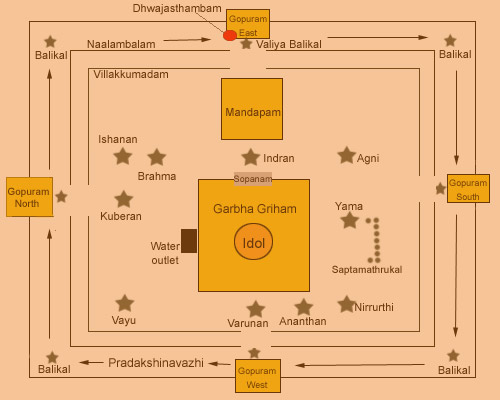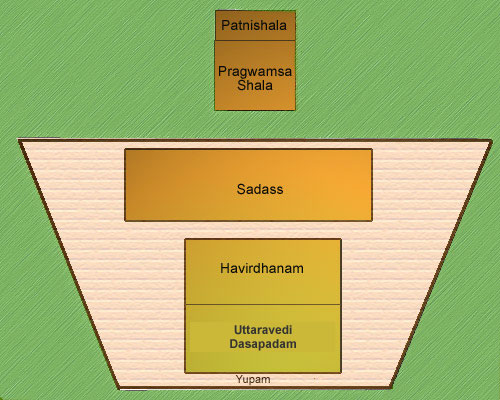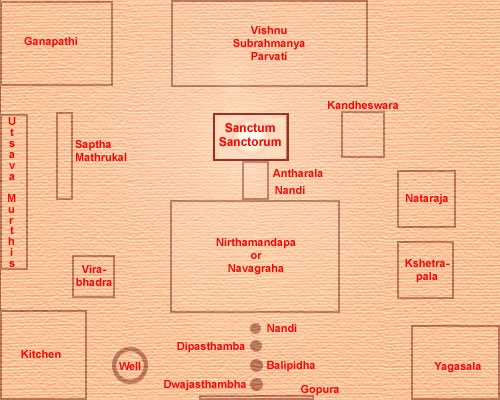The Architecture of Kerala Temples and a comparison with Yagasala
A diagram of a Kerala Temple

A diagram of the Yagasala

The temple also resembles the human body.(in the vertical plane) The human body contains invisible parts comprising energy centres called Chakras and a Kundalini which is supposed to have the shape of a snake.Shadadhara prathishta which resembles the shape of these Chakras is done in Kerala.
* 1.Adharasila -------(Muladharam)
* 2.Nidhikumbham -(Swadhishtanam)
* 3. Padmam ---------(Manipurakam)
* 4. Kurmam ----------(Anahatham)
* 5. Yoganalam-------(Vishudhi)
* 6. Napumsakasila (Aajna)
All the above representing these chakras are below the Deity and cannot be seen after the deity is installed.. In the horizontal plane it is like the body prostrating with feet at Gopura and head touching the Deity.. In Kerala while doing Pradakshina we do not cross the liquid outlet( outlet for the liquids to come out after abhisheka) of Siva.This system is not practiced any where else outside Kerala, except at the Somanath temple in Gujarath. ......
Note:- Top is the sketch of a temple and next below is the outline of a Yagasala.Below is given comparison of the parts of both.
|
Yagasala |
Temple |
|
Yupa |
Flag mast |
|
Utharavedi |
Balikalpura |
|
Dasapadam |
Valia Balikal |
|
Havirdhanam |
Valiambalam |
|
Sadass |
Mandapam |
|
Pragwamsa sala |
Sree koil(Sanctum sanctorum) |
|
Agnikundam |
Sivalingam |
|
Pathnisala |
Durga |
Other resemblances
1. One who does Yaga is called Yajamana and one who builds temple is also called Yajamana.
2. The helpers in Yaga are called Ritwiks.The parikarmis in temples are also called Ritwiks.
3. The three kriyas in Yagasala are called Prathasavanam, Madhyahnikam,and Thrithiyasavanam. The same names are given for poojas in temples.
A sketch of temples outside Kerala.
